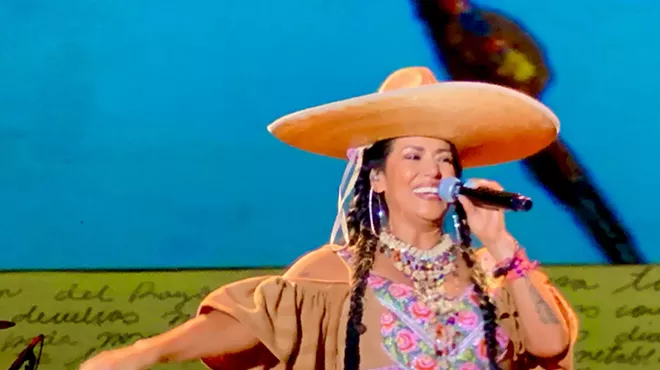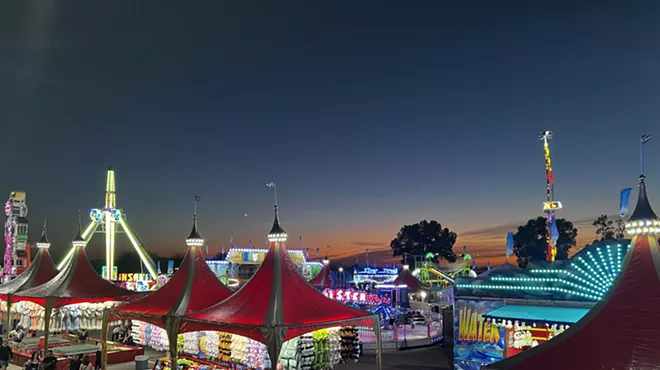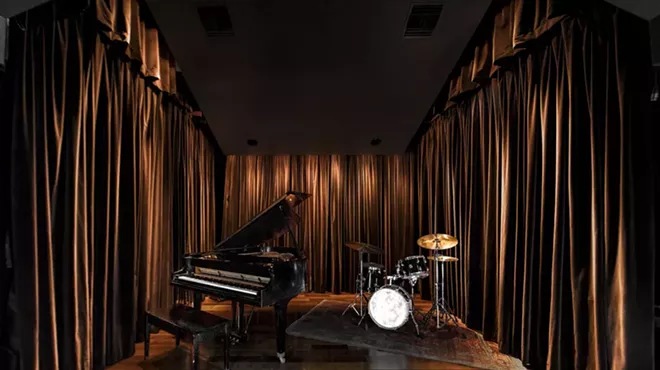Friday, October 31, 2014
Etherton Gallery Hosts Landscape Exhibit & Panel Discussion
Etherton Gallery is hosting a new show, Land Exposures, that highlights a new way of looking at landscape photography. From Etherton's description of the show:
In Etherton Gallery’s newest exhibition, Land Exposures, three contemporary photographers redefine the traditional genre of landscape photography. David Emitt Adams, Richard Laugharn and Jamey Stillings open up a new frontier in landscape photography, advancing the medium in exciting new directions. An installation of photographer Chris Colville’s photographs from the series Works of Fire will be on display in Etherton’s in-house pop-up gallery. Land Exposures opens Saturday, November 8, 2014 with an artist reception from 7 to 10pm. The show runs through January 3, 2014.
Here's a TED Talk by one of the photographers in the show, Jamey Stillings, who has done extraordinary work with New Mexico's massive solar arrays.
Stillings will on hand for a panel discussion on renewable energy challenges from 6 to 7:30 p.m. on Thursday, Nov. 6. Here's how Etherton describes the upcoming event:
Etherton Gallery and photographer Jamey Stillings are pleased to host a panel discussion at 6-7:30pm, on Thursday, November 6, in conjunction with its new exhibition, Land Exposures, featuring Stillings, David Emitt Adams and Richard Laugharn. Stillings has photographed the largest solar energy generating plant in the world, the Ivanpah Solar Electric Generating System which is out in the Mojave Desert. Work from the series has been featured in the NYT magazine, the Wall St. Journal, Smithsonian and a number of other publications. Stillings is an articulate spokesman about the issues that have arisen as a result of the large-scale implementation of alternative energy. The Ivanpah plant has over 300,000 mirrors which reflect light to boilers that sit atop three, 40-story towers. The sunlight strikes the boilers’ pipes to create superheated steam that is piped to turbines where electricity is generated. Ivanpah takes up about five square miles and provides electricity for about 140,000 homes. However, it has come under fire for its adverse impact to local wildlife. As Southern Arizona becomes a hub for alternative energy, the needs of the community, endangered wildlife and the green energy movement will likely come into conflict. The panel discussion promises to begin a dialogue on some of these issues.The panel features Kevin Koch, owner of Technicians for Sustainability, a solar energy company with a mission to help businesses, public institutions, and homeowners; John Shepard, a Senior Adviser at the Sonoran Institute, who is currently leading the Institute’s efforts to appropriately site utility-scale solar projects in Arizona and more effectively integrate local land-use policies and water management in the Colorado River basin; and Brian Wheelwright, PhD Candidate in the College of Optical Sciences at the University of Arizona, who is adapting telescope manufacturing technologies to produce cheap dish mirrors for solar concentration, with the goal of producing low-cost solar energy.
Below the cut: Details of the photographers as provided by Etherton:
Best known for capturing the construction of the Hoover Dam Bypass Bridge, in his latest project Jamey Stillings has produced epic aerial photographs of the world’s largest solar plant, the Ivanpah Solar Electric Generating System. Sprawling across five square miles of the Mojave Desert, the installation consists of three power plants, each with a 40-story tower surrounded by thousands of mirrors. Stillings' images evoke the tensions between the massive infrastructure required to implement solar technology on a meaningful scale and the environmental disruption it causes. "From a creative standpoint, I wanted to see if there was a project that could tie in my aesthetic interests with my environmental interests," Stillings said. Thus began an aerial odyssey that lasted two years and included 16 site visits and 18 flights to record the construction of Ivanpah. With only 15 to 30 minutes to work on each flight, Stillings produced sublime aerial landscapes with magisterial views of Ivanpah that celebrate the triumph of science and the awe-inspiring beauty of the installation as well as the cost of realizing the goal of green energy independence. Not surprisingly photographs from this monumental project have been published widely including in The New York Times, Wired, and The Wall Street Journal.
David Emitt Adams revisits the materiality of photography at a time when idealized, nostalgia driven versions of ourselves, courtesy of Instagram’s popular “oldies” filters, circulate endlessly yet may never appear as a print. The object-ness of photo sculptures from the series, Conversations with History, offers a radical alternative to the disappearing images marketed by Snapchat as well as the alternative process movement, which emphasizes craft. Adams’ photo sculptures operate in the conceptual territory pioneered by Robert Heinecken, who challenged the primacy of straight photography beginning in the early 1970s. Adams’ hybrids treat the photograph as both a surface and a sculptural material, and recall Heinecken’s avant-garde photo sculptures as well as the 19th century landscape photography of Timothy O’Sullivan. Made using the wet collodion process on found objects, Adams’ works luxuriate in the tactile. Glossy collodion surfaces brush up against the light sandpapery texture of bent, crushed, or worn, patinated metal. Adams’ photo sculptures evoke a post-apocalyptic present reduced to the scale of a crushed tin can, offering visions of forbidding desert landscapes populated with giant saguaro, empty roads, and abandoned cranes, a stark contrast to contemporary ephemera that idealize the past. David Emitt Adams’ photo objects confound our expectation of the photograph as either a 2-D image or a compressed jpeg and as a talisman for memory.
Richard Laugharn’s lyrical images merge science and poetry, expressing a deeply felt sense of belonging. Laugharn’s landscape photographs also suggest a new way of understanding the medium. As he points out today, “landscape photography is often thought of as either a celebration of beauty or a vehicle for… advocacy. While I have benefited from intersections with these paths, my natural tendency has taken me in a somewhat different direction. Since I was a boy, I have turned to nature the way an avid reader returns to a beloved text.” Eschewing overt references to environmental advocacy or border politics, Laugharn has spent the last several years making trips to the Pinacate desert of northwest Sonora, photographing the evolution of individual plants over time, creating a narrative about an unabashed love of place and documenting changes in the wide open spaces of the desert landscape. His photographs include textual references to the plants he visits and name the natural phenomena they witness — from the ascension of Saturn to the mysterious glow of lights from Puerto Peñasco.
Christopher Colville’s photographs from the series, Works of Fire are on display in the Etherton in-house pop-up gallery. Meditations on the duality of creation and destruction, these abstract images of are created by igniting small portions of gunpowder on the surface of gelatin silver paper.
For more information about Jamey Stillings, Richard Laugharn, David Emitt Adams or Christopher Colville, please contact Daphne Srinivasan or Hannah Glasston at 520.624.7370 or email the gallery at info@ethertongallery.com.
David Emitt Adams (b. 1980)
David Emitt Adams is an emerging photographer based in Phoenix, Arizona. Born in Yuma, he earned a Bachelors of Fine Art Degree from Bowling Green State University in Ohio and a Masters of Fine Arts degree Arizona State University, Tempe. In his current practice, Adams engages historical media and uses them in an informed contemporary dialogue about photography’s past and present. His work has been selected for the prestigious Lens Culture International Exposure Award, the Freestyle Crystal Apple Award for Outstanding Achievement in Black and White Photography, and the Nathan Cummings travel grant, which allowed him the opportunity to investigate the resurgence of historic photographic processes in France and England. Adams has exhibited his photographs at galleries and museums in the United States and abroad, including the Griffin Museum of Photography, Winchester, MA; the Colorado Photographic Arts Center, Denver; Santa Barbara Museum of Art, The Studio in London, and VOZ’ Gallery in Paris. He has been a guest lecturer at the San Francisco Art Institute, the Carnegie Museum of Art, and at the 50th anniversary of the Society for Photographic Education National Conference in 2013. His work is in the permanent collection of The Museum of Photographic Arts in San Diego, Santa Barbara Museum of Art, Northlight Gallery, Tempe, Arizona and several private collections.
Jamey Stillings (b. 1955)
Jamey Stillings' three-decade career includes documentary, fine art and commercial projects. He received a BA in Art from Willamette University and an MFA in Photography from Rochester Institute of Technology.
Stillings is best known for a series of photographs made during 2009 — 2011 that document the construction of the Hoover Dam Bypass Bridge. Photographs from this series and his most recent project documenting the construction of the massive Ivanpah Solar Generating System installation in the Mojave Desert, have been widely acclaimed and published in The New York Times Magazine, Time, Smithsonian, Arizona Highways, Wired, Le Monde, Neue Energie, New Scientist, Newsweek Japan, and fotoMagazin and several other news and art periodicals.
In September 2014, Stillings was a speaker at TEDxABQ, independently organized program of local events in Albuquerque modeled on TED. He is also the recipient of numerous awards and honors including recently, the American Photographic Artists (APA) First Place Award for Fine Art Photography (2014); Elliot Porter Award (2013); and the Critical Mass Solo Exhibition Award (2013). In 2012 and 2013 Stillings was nominated for the prestigious global Prix Pictet Award, given to the photographer whose work confronts pressing social and environmental challenges.
The Bridge at Hoover Dam, Jamie Stillings’ first monograph, was published in 2011 by Nazraeli Press. His second book, The Evolution of Ivanpah Solar will be published by Steidl in 2015.
Photographs from The Hoover Dam Bypass Bridge and Ivanpah projects have been exhibited in solo and group shows at public institutions all over the United States and abroad including the Center for Creative Photography, Tucson; the Museum of Fine Arts, Houston; The Phoenix Art Museum, the Museum of Contemporary Photography, Chicago and the Annenberg Space for Photography, Los Angeles; the Royal Geographic Society, London; Noorderlicht, Drenthe, The Netherlands; and Zoomlab, Medellin, Columbia.
Jamey Stillings' photographs are in the permanent collections of the Library of Congress, Museum of Fine Arts, Houston; Nevada Museum of Art; Middlebury College Museum of Art; and various private and corporate collections.
Richard Laugharn (b. 1959)
Richard Laugharn was born in New York and grew up in California. He received his BA in Art at California State University at Long Beach and his MFA from Arizona State University. His photographs have been exhibited at the Temple Gallery, Tucson, AZ; Northlight Gallery in Tempe; the Maine College of Art and the Scottsdale Museum of Contemporary Art. In 2009, he was a nominee for the John Gutmann Photographer Fellowship. In addition to several private and corporate collections, Laugharn’s work is in the permanent collections of the Center for Creative Photography, Tucson; The Nelson-Atkins Museum of Art, Kansas City, MO; and the Scottsdale Museum of Contemporary Art. Laugharn is a co-author of Among Unknown Tribes: Rediscovering the Photographs of Explorer Carl Lumholtz (University of Texas Press, 2014).
Christopher Colville (b. 1974)
Christopher Colville was born in Tucson, Arizona. He received his BFA in Anthropology and Photography from Washington University in St. Louis, Missouri and his MFA in Photography from the University of New Mexico. He has held positions as visiting Assistant Professor at Arizona State University and Adjunct at the Maricopa Community Colleges. Colville is the recipient of several awards including the 2012 Critical Mass Top 50 Award; the Humble Art Foundation 2009 New Photography Grant; an Arizona Commission on the Arts Artist Project Grant; a Public Art Commission from the Phoenix Commission on the Arts; and an American Scandinavian Foundation Artist Fellowship which allowed him to travel to Iceland. His work has recently been exhibited in the MIA Photo Festival, Milan, Italy; the Griffin Museum of Photography in Winchester, MA; the Center for Photography at Woodstock, NY; the Tucson Museum of Art and the Southeast Museum of Photography, Daytona Beach, FL. Colville’s photographs are in the permanent collections of the George Eastman House, Rochester, NY; the International Center of Photography, New York, NY; and the Museum of Photographic Arts, San Diego, CA.












